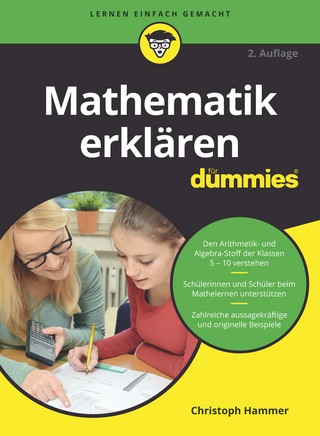
The Hilbert Challenge
Seiten
2000
Oxford University Press (Verlag)
978-0-19-850651-5 (ISBN)
Oxford University Press (Verlag)
978-0-19-850651-5 (ISBN)
In 1900, David Hilbert posed a set of 23 unsolved mathematical problems, thus setting an agenda for mathematics that lasted throughout the 20th Century. This book addresses the nature of Hilbert and his problems, and their significance for the progress of mathematics in our time.
David Hilbert was arguably the leading mathematician of his generation. He was among the few mathematicians who could reshape mathematics, and was able to because he brought together an impressive technical power and mastery of detail with a vision of where the subject was going and how it should get there. This was the unique combination which he brought to the setting of his famous 23 Problems. Few problems in mathematics have the status of those posed by David Hilbert in 1900. Mathematicians have made their reputations by solving individual ones such as Fermat's last theorem, and several remain unsolved including the Riemann hypotheses, which has eluded all the great minds of this century. A hundred years on, it is timely to take a fresh look at the problems, the man who set them, and the reasons for their lasting impact on the mathematics of the twentieth century. In this fascinating new book, Jeremy Gray and David Rowe consider what has made this the pre-eminent collection of problems in mathematics, what they tell us about what drives mathematicians, and the nature of reputation, influence and power in the world of modern mathematics. The book is written in a clear and lively manner and will appeal both to the general reader with an interest in mathematics and to mathematicians themselves.
David Hilbert was arguably the leading mathematician of his generation. He was among the few mathematicians who could reshape mathematics, and was able to because he brought together an impressive technical power and mastery of detail with a vision of where the subject was going and how it should get there. This was the unique combination which he brought to the setting of his famous 23 Problems. Few problems in mathematics have the status of those posed by David Hilbert in 1900. Mathematicians have made their reputations by solving individual ones such as Fermat's last theorem, and several remain unsolved including the Riemann hypotheses, which has eluded all the great minds of this century. A hundred years on, it is timely to take a fresh look at the problems, the man who set them, and the reasons for their lasting impact on the mathematics of the twentieth century. In this fascinating new book, Jeremy Gray and David Rowe consider what has made this the pre-eminent collection of problems in mathematics, what they tell us about what drives mathematicians, and the nature of reputation, influence and power in the world of modern mathematics. The book is written in a clear and lively manner and will appeal both to the general reader with an interest in mathematics and to mathematicians themselves.
Jeremy Gray is Senior Lecturer in Mathematics at the Open University. His research interests lie in the history of the mathematics of the 19th and 20th centuries, and in the philosophy and social significance of mathematics. He is the author or editor of nine books, most recently The Symbolic Universe: Geometry and Physics 1890-1930 (OUP 1999).
INTRODUCTION; HILBERT IN PARIS; HOW HILBERT CAME TO PARIS; PARIS IN MORE DETAIL; 1900-1918; 1918-1945; AFTER 1945; EPILOGUE; GLOSSARY; APPENDIX 1: HILBERT'S LECTURE AT THE INTERNATIONAL CONGRESS OF MATHEMATICS, PARIS, 1900; APPENDIX 2: THE HILBERT PROBLEMS 1900-1999; APPENDIX 3. LOGICAL MATTERS; BIBLIOGRAPHY; INDEX
| Erscheint lt. Verlag | 23.11.2000 |
|---|---|
| Zusatzinfo | numerous line figures |
| Verlagsort | Oxford |
| Sprache | englisch |
| Maße | 145 x 224 mm |
| Gewicht | 575 g |
| Themenwelt | Sachbuch/Ratgeber ► Natur / Technik |
| Mathematik / Informatik ► Mathematik ► Allgemeines / Lexika | |
| Mathematik / Informatik ► Mathematik ► Geschichte der Mathematik | |
| Mathematik / Informatik ► Mathematik ► Mathematische Spiele und Unterhaltung | |
| ISBN-10 | 0-19-850651-1 / 0198506511 |
| ISBN-13 | 978-0-19-850651-5 / 9780198506515 |
| Zustand | Neuware |
| Haben Sie eine Frage zum Produkt? |
Mehr entdecken
aus dem Bereich
aus dem Bereich


